
Choosing a T-shirt isn't just about color or fit—what it's made of changes everything from how it feels on your skin to how long it lasts.
The debate between tri-blend vs cotton comes down to more than softness. Some fabrics drape better, some hold up to washing, and some make printing designs look sharper.
In this guide, you'll see which fabric works best for casual wear, which holds up under repeated washes, and which gives that effortless fit without looking sloppy.
Understanding Tri-Blend and Cotton
Understanding Tri-Blend
You've probably felt a tri-blend t-shirt before. It has a unique soft drape that feels different from regular cotton.
That's because it's a mix of three fibers: typically cotton, polyester, and rayon (sometimes called viscose).
Think of it like this: the cotton gives it familiarity, the polyester adds durability and helps it hold its shape wash after wash, and the rayon contributes that super soft feel and helps the fabric move nicely.
This blend often uses percentages like 50% cotton, 25% polyester, and 25% rayon. The result is a fabric that feels lighter and often has a slight texture or vintage look right away.
Understanding Cotton
Cotton is likely your go-to fabric for everyday basics. It's a natural fiber, grown from plants. This means it's generally breathable, letting air flow to keep you cooler.
You'll find cotton t-shirts in different weights, like light ones for summer or heavier ones for durability. Cotton feels soft and comfortable against your skin.
However, 100% cotton fabric can sometimes feel stiff when new and might shrink a bit after washing.
It can also wrinkle easily and might stretch out or lose its shape faster than blends, especially if it's a thinner knit. It's a classic for good reason, but it has its own characteristics.

Tri-Blend vs Cotton: Complete Comparison of Details
1. Softness and Comfort
Tri-Blend
Tri-blend shirts feel soft and lightweight, almost like they move with you. The mix of cotton, polyester, and rayon gives a smooth texture that doesn't cling. You'll notice it drapes well on your body, making it comfortable for long hours or layering under jackets without feeling bulky.
Cotton
Cotton feels natural and breathable, with a classic firmness that some people prefer. At first, it can feel a little stiff, but repeated washes soften it. If you like a traditional t-shirt feel that holds its shape, cotton offers reliable comfort that improves over time.
2. Durability
Tri-Blend
Tri-blends are surprisingly durable because polyester adds strength and stretch resistance. Shirts keep their shape through multiple washes and regular wear. You won't see sagging or excessive pilling quickly, which makes tri-blend a solid choice for everyday use or t-shirts you rely on often.
Cotton
Cotton is strong but can shrink or stretch depending on care. Rough washing may lead to minor wear or small holes over time. High-quality cotton holds up well, and its fibers become softer with repeated use, but you may notice changes if it's frequently washed or exposed to rough handling.

3. Print and Design Appearance
Tri-Blend
Printing on tri-blend can be tricky because the heathered fabric affects colors and detail. Some prints may look muted or slightly textured. Designs with a vintage or soft aesthetic work best, while precise lines or bold blocks of color might not stand out as sharply as on cotton.
Cotton
Cotton prints turn out bright and crisp, and designs maintain fine detail. If your goal is sharp lines or vivid colors, cotton delivers consistent results. It's easier to work with for most printing methods, giving predictable outcomes for both casual wear and promotional t-shirts.
4. Breathability and Moisture
Tri-Blend
Tri-blend is lightweight and dries faster than cotton. The rayon helps pull moisture away from your skin, keeping you cooler in hot weather or during activity. Shirts feel less sticky when you sweat, which makes them comfortable for moving around or wearing multiple layers.
Cotton
Cotton is breathable and absorbs sweat well, but it holds moisture longer. You might notice a damp feeling if you're active or outside in warm conditions. For everyday wear, it's comfortable, but it doesn't dry as quickly as tri-blend when it gets wet.

Print On Demand Men's Basketball Jersey (AOP) - PrintKK
5. Shrinkage and Maintenance
Tri-Blend
Tri-blends shrink less than cotton, thanks to polyester. You can machine wash and tumble dry without much risk of changing the fit. To keep it soft and prevent minor distortion, avoid high heat. Overall, maintenance is simpler, letting you wear it frequently without worry.
Cotton
Cotton is more prone to shrinkage, especially in hot water or dryers. Pre-shrunk cotton helps, but repeated washing can still slightly alter the fit. Following care instructions is important if you want your shirt to stay close to the original size.
6. Environmental Impact
Tri-Blend
Tri-blend includes polyester, often from petroleum, which adds durability but a bigger environmental footprint. Some brands use recycled polyester, which reduces impact. You should check labels if sustainability is important, as sourcing can vary widely between manufacturers.
Cotton
Cotton is natural and biodegradable, but conventional farming uses lots of water and chemicals. Organic cotton reduces environmental harm and feels softer after washing. If you care about the planet, organic cotton is a better choice, though it might cost more and feel slightly different at first.
7. Cost and Value
Tri-Blend
Tri-blends cost more initially because of the mixed fibers, but you get a shirt that keeps its shape, stays soft, and lasts longer. For frequent wear or when comfort matters, it can save you money in the long run by reducing replacement frequency.
Cotton
Cotton is usually cheaper upfront, with a lower price per shirt. You can buy more for less, but heavy use might wear them out faster. If budget matters more than long-term softness or durability, cotton remains a practical and reliable choice.
How Tri-Blend Ratios Change the Feel of Your T-Shirt
50/25/25 – Soft and Silky
A 50/25/25 tri-blend is very soft and lightweight. It drapes nicely, following your body without feeling tight, and keeps its shape well after washing.
This blend gives a smooth, slightly silky touch that makes casual wear feel comfortable. The prints are decent, though not as sharp as higher-cotton shirts.
- Best For: Retail fashion, casual wear
- Print Quality: Medium
60/20/20 – Balanced Cotton-Like Feel
With 60% cotton, the shirt feels more like traditional cotton while keeping some softness. It drapes moderately and breathes well, offering a balance between comfort and structure.
Shrinkage is moderate, and prints come out sharp, making it a good choice for branded shirts or designs that need clarity.
- Best For: Printed shirts, merchandise
- Print Quality: High
70/20/10 – Classic Cotton Feel
A 70/20/10 blend gives the feel closest to a pure cotton shirt. It has more structure and less drape, breathes well, and prints look very crisp.
Shrinkage is higher than lower-cotton blends, but durability and print quality are excellent. This ratio works well if you prefer a traditional cotton feel or need heavy-print T-shirts.
- Best For: Classic cotton T-shirts, heavy prints
- Print Quality: Very high
Quick Comparison Table
Attribute | 50/25/25 | 60/20/20 | 70/20/10 |
Feel | Silky soft | Balanced, cotton-like | Classic cotton feel |
Drape | High | Medium | Low |
Shrinkage | Low | Medium | Higher |
Print Quality | Medium | High | Very high |
Best For | Retail fashion | Merch, prints | Basics, heavy print |
Choosing Between Tri-Blend and Cotton for Different Types of Apparel
T-Shirts
Tri-blend T-shirts are soft and flexible, which makes them easy to layer or wear casually. They drape well and move with your body, so you won't feel restricted.
Cotton T-shirts, on the other hand, provide a classic, structured feel. They hold their shape over time and work best if you want a traditional fit or plan to print detailed graphics.
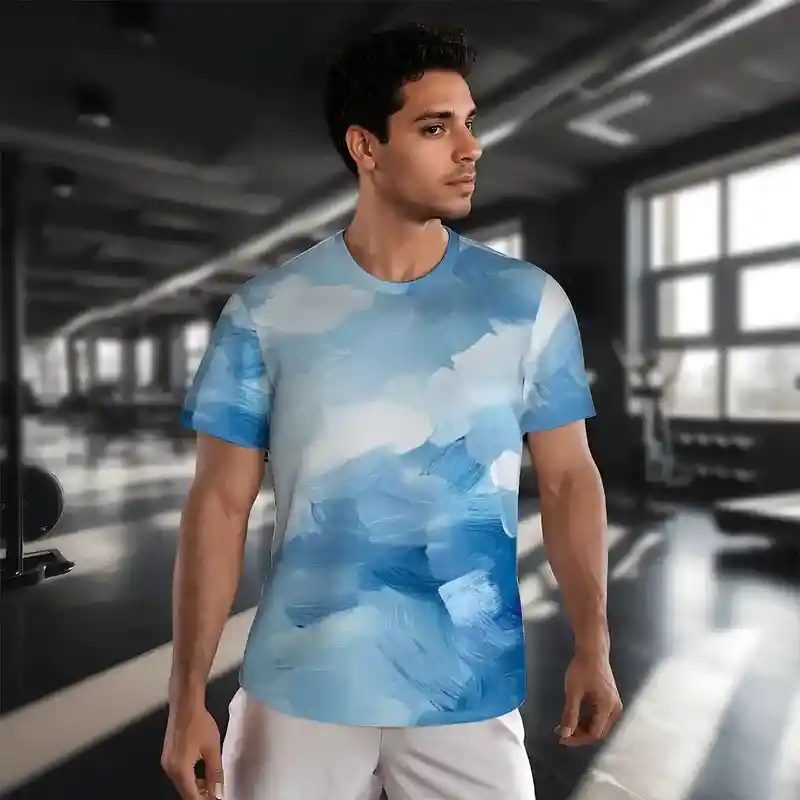
Custom Men's Mesh T-Shirt - Print on Demand Fulfillment - PrintKK
Sweatshirts and Hoodies
Tri-blend hoodies feel lighter and smoother, which is useful if you plan to wear them indoors or under a jacket.
They resist wrinkling and retain shape better when stretched. Cotton hoodies are thicker and warmer, giving you a cozy feel. They may shrink a bit but hold heat well and last if washed carefully.
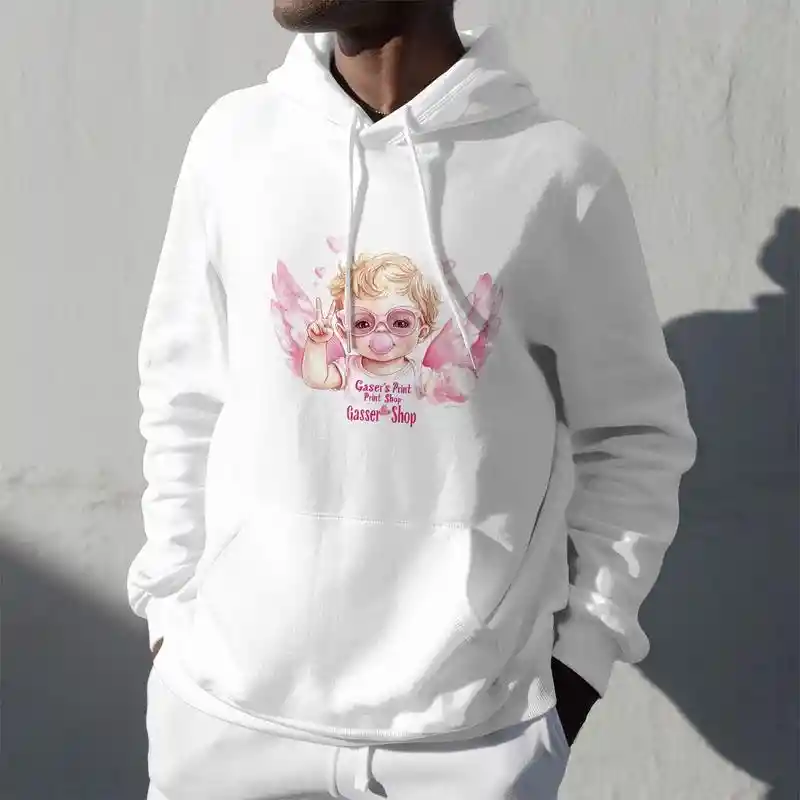
Athletic Wear
Tri-blend is better for movement because it stretches slightly and wicks moisture faster than cotton. You'll feel less restricted during exercise.
Cotton can feel heavier and hold sweat longer, which may be uncomfortable for long workouts. It is still fine for light activity or casual sports where breathability is less critical.
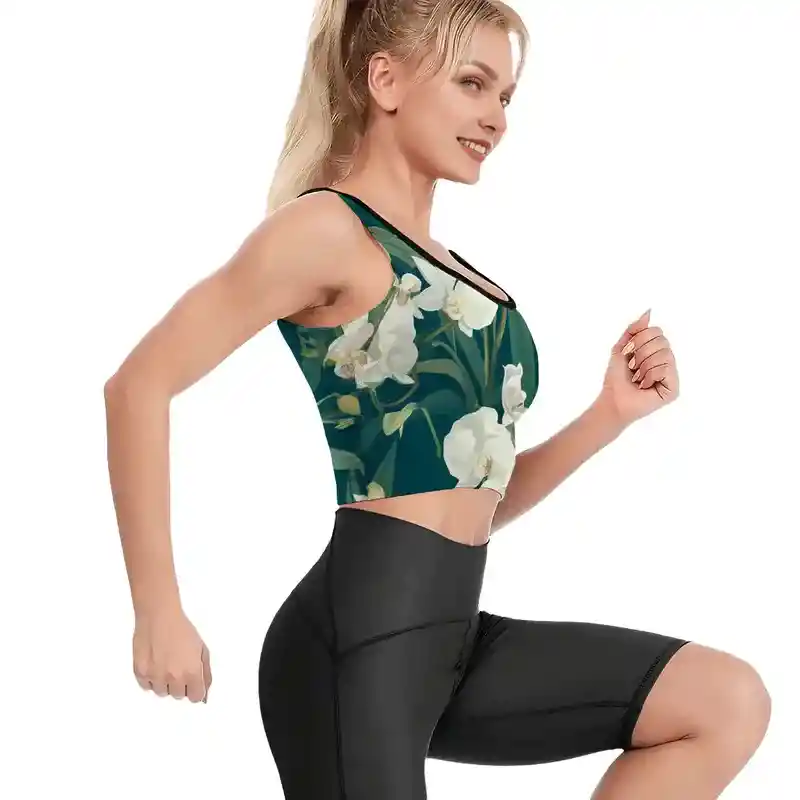
Custom Printed on Demand Yoga Strappy Sports Bra Top (AOP) - PrintKK
Long-Sleeve Shirts
Tri-blend long sleeves drape softly and feel lightweight, making them suitable for layering under jackets. Cotton long sleeves are firmer and more durable, which helps if you want a crisp look. They hold their shape after multiple washes but may feel stiff at first.
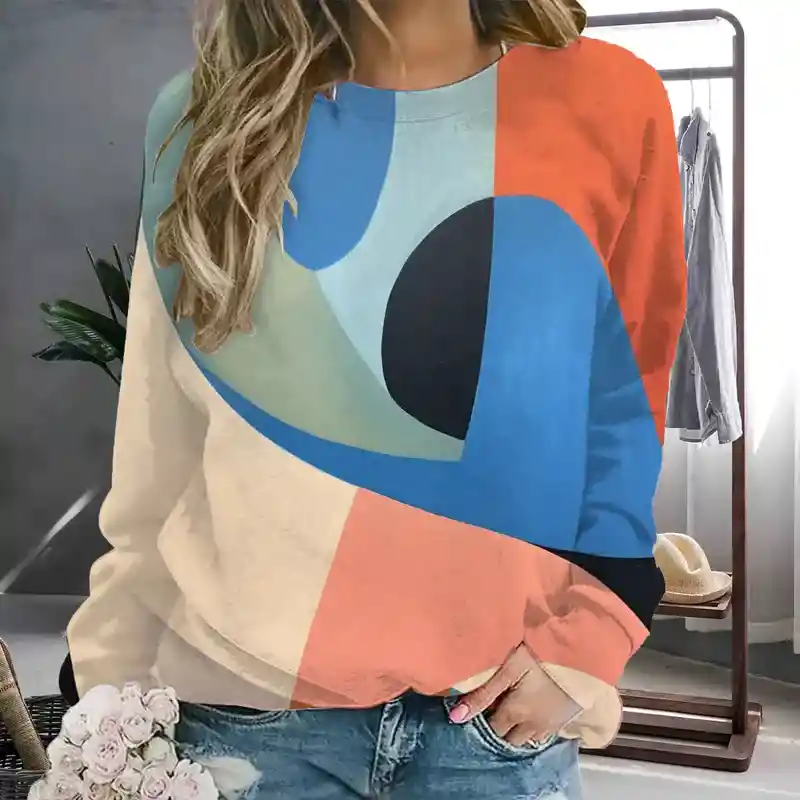
Custom AOP Raglan Crewneck Sweatshirts Women with Print on Demand - PrintKK
Graphic or Merch Tees
If you plan to wear printed designs, tri-blend can show graphics smoothly, giving a relaxed look.
Cotton holds prints sharper and brighter, which is better for detailed designs. Choose cotton if your T-shirt has intricate text or fine lines, and tri-blend if you prefer a soft, casual aesthetic.
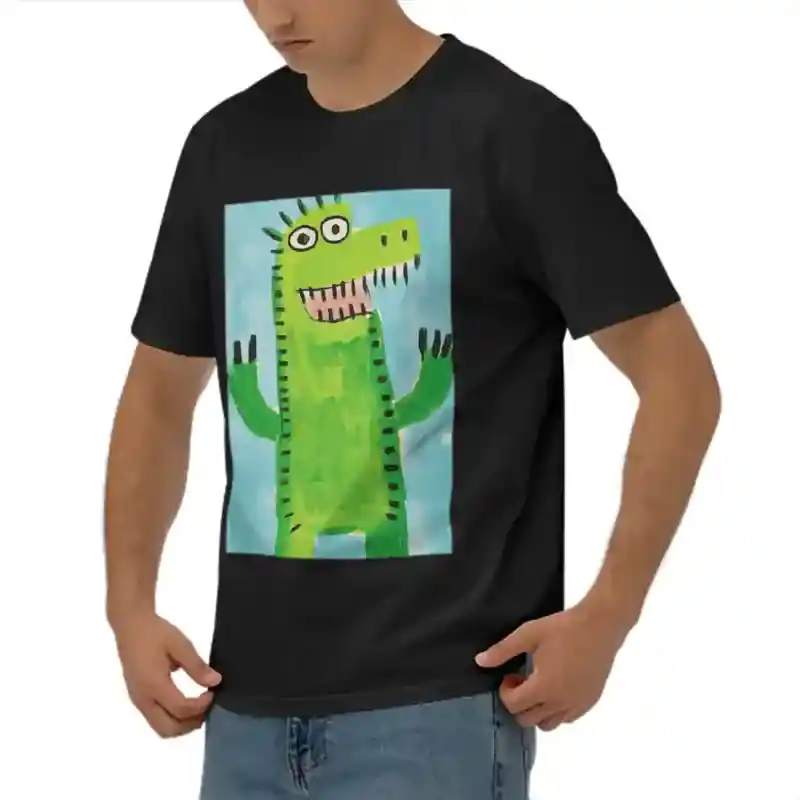
Print On Demand Men's Combed Cotton Short-Sleeved T-Shirt - PrintKK
Casual Everyday Shirts
Tri-blend shirts are comfortable all day and don't cling. They move with your body, so you can sit, bend, or stretch freely. Cotton shirts are reliable and familiar, and they soften over time. They are great if you want a T-shirt that feels traditional and molds to your body with use.
Read More:
- Cotton Polyester Blend Guide: Pros, Cons, and Uses
- Polyester vs Cotton Shirts: Which Is Better T-Shirt Fabric?
Why Are More Brands Switching to Tri-Blend?
You might notice higher-end brands favor tri-blend t-shirts. It's not about cutting costs like lower-end brands. They use tri-blend to create a specific feel and look.
Cotton, polyester, and rayon together give a shirt soft comfort, a little stretch, and a fit that follows the body naturally.
Tri-blend also changes how the fabric looks. The mix can give a subtle heathered effect or smoother drape that pure cotton rarely achieves.
This makes shirts look more refined while staying comfortable. For some designs, this slight texture enhances prints and graphics better than a plain cotton shirt.
It doesn't mean tri-blend is always better than cotton. Quality and construction matter more than the ratio of fibers.
You can pick tri-blend when you want a shirt that's soft, fits well, and keeps its shape, but cotton still works well for classic, breathable tees. Understanding these differences helps you choose the right shirt for comfort and style.
Tri-Blend vs Cotton: Which Is the Best Fabric for T-Shirt?
When choosing a t-shirt, understanding tri-blend vs cotton helps you make the right choice.
If you want a t-shirt that moves with you and keeps its shape, tri-blend is a solid option.
If you prefer natural fibers and a timeless feel, cotton works well. Both fabrics have strengths.
By knowing their differences, you can select a t-shirt that fits your lifestyle and feels good every day.
FAQs
Is cotton or tri-blend better?
It depends on what you need. Cotton feels firmer and classic, while tri-blend is softer, slightly stretchy, and drapes better. Tri-blend often works well if comfort and movement matter more than a traditional feel.
Is tri-blend good for hot weather?
Tri-blend is breathable but slightly warmer than pure cotton. The polyester adds some weight, while rayon helps airflow. It can be comfortable for summer, especially if you prefer lightweight, soft fabrics that move with your body.
Which is best, a tri-blend t-shirt or a poly-cotton blend?
Tri-blend usually feels softer and drapes more naturally. Poly-cotton blends are more durable and hold their shape, but tri-blend gives a more relaxed, comfortable fit. Your choice depends on softness versus structure.
Is tri-blend fabric good for printing?
Tri-blend works for most prints, giving designs a smooth, natural look. Very detailed graphics may blur slightly, but simple logos or illustrations maintain clarity. It's ideal if you want a softer handfeel under the print.
Are tri-blend shirts good for working out?
Yes, tri-blend moves with your body and stretches a bit, which helps during exercise. It absorbs less sweat than cotton, dries faster, and stays comfortable, making it suitable for casual or light workouts.










 Global Shipping
Global Shipping





























